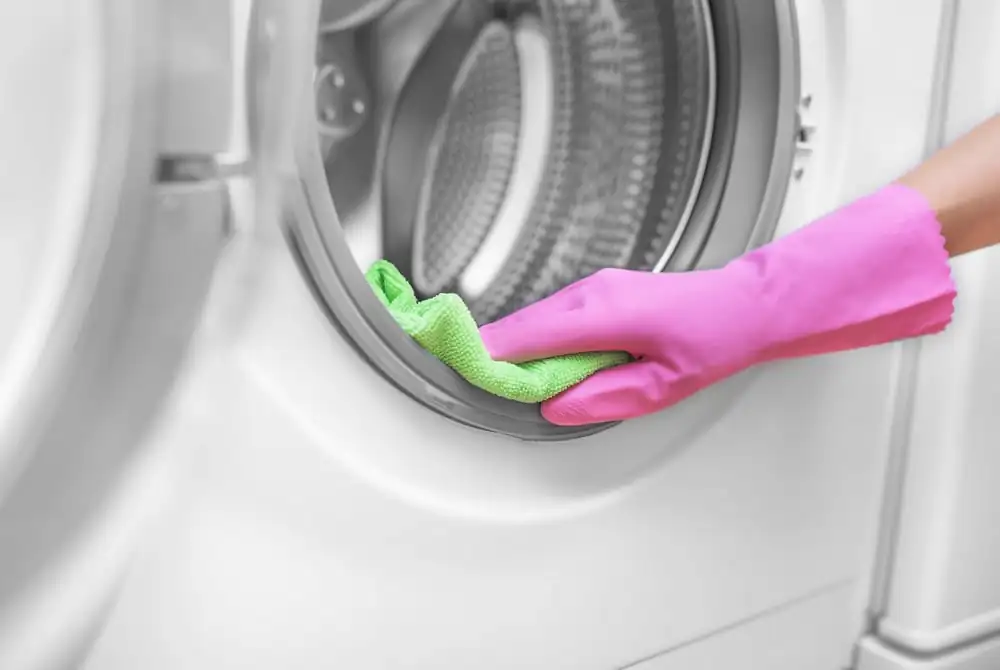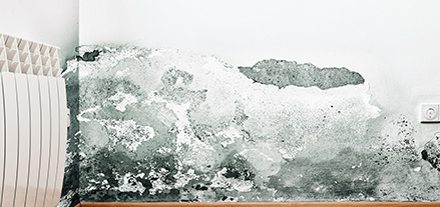
Just like your clothes, your washing machine and dryer are items that require periodic cleaning, though not that often. Over time, washing machines accumulate detergent residue which may lead to mold, and dryers collect lint that can start a fire. So clean your washer and dryer regularly to keep them safe and fresh.
How to Clean Your Washing Machine and Dryer
For washing machine:
- Run a cycle with baking soda. Run the longest and hottest cycle with water and regular baking soda (without laundry). Add two cups of baking soda directly into the washing machine. This is going to combat moldy smells that old soap and fabric softeners leave behind.
- Run another cycle with white vinegar. To further eliminate musty odors, as well as soap and fabric deposits, pour two cups of white vinegar directly into the machine drum and run the longest and hottest cycle. For extra freshness, add 10 drops of essential oil, such as tea tree or lavender into the mix.
- Clean the washing machine’s interior. Wipe down the drum and agitator (if you have one) with vinegar and a cotton cloth. Remove any stains using a paste of baking soda and water and a soft sponge.
- Clean the rubber seal attached to the washer door if you have a front-load washer. It usually hosts mold which is bad for your health and your clothes. Clean it with a cotton cloth dipped in white vinegar or your favorite all-purpose cleaner.
- Clean the exterior machine parts. Now it’s time to give your washer door, the exterior surfaces, as well as the detergent dispensers a good clean. If dispensers are removable, take them out first. Use vinegar or your favorite cleaner and a cotton cloth. If you have a top-load washer, clean the top of the lid and underneath it. For cracks and crevices, use a toothbrush and baking soda if needed.
For dryer:
- Clean the lint filter/trap. First, remove the filter and vacuum it out (depending on the dryer, you may need to unscrew the filter first). Then, clean the lint that has built up in the filter trap using a narrow wand attachment on your vacuum cleaner.
- Vacuum the dust in the back panel. Before you do this, make sure to read the manufacturer’s instructions first. Once you’re sure it’s safe to clean the back panel, unscrew the bolts and you’ll see a ton of lint inside. Vacuum out the lint and use a narrow brush to get inside difficult areas.
- Clean the lint in the drum. Wash the interior drum and the dryer door thoroughly with a sponge and a cleaner, and let it dry.
- Vacuum the duct. First, detach the lint duct at the back of the dryer carefully and use your vacuum to remove the lint and dust inside the duct. You also want to check the outside exhaust pipe to ensure there isn’t any lint blocking the vent. Remove the flap and vacuum the lint if there is any.
- Wipe down the dryer. Now it’s finally time to clean the exterior surfaces of the dryer using warm water and an all-purpose cleaner. Once this is done, reattach the back panel and ducts.
Clean your washing machine and dryer regularly to make them last longer, better protect your clothes, and avoid hazards, such as mold growth in the washer, washing machine overflows and dryer fires. For water removal services and fire damage restoration services, contact your local PuroClean office.




